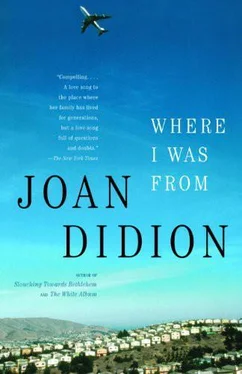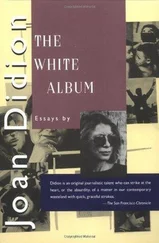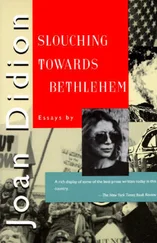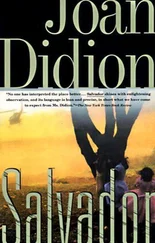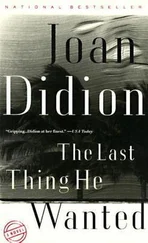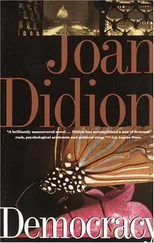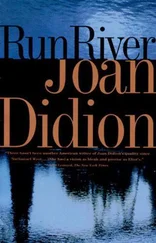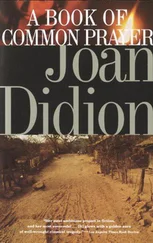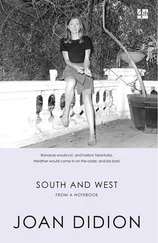IN the May 1935 issue of the American Mercury , William Faulkner published one of the few pieces of fiction he set in California, a short story he called “Golden Land.” “Golden Land” deals with a day in the life of Ira Ewing, Jr., age forty-eight, a man for whom “twenty-five years of industry and desire, of shrewdness and luck and even fortitude,” seem recently to have come to ashes. At fourteen, Ira Ewing had fled Nebraska on a westbound freight. By the time he was thirty, he had married the daughter of a Los Angeles carpenter, fathered a son and a daughter, and secured a foothold in the real estate business. By the time we meet him, eighteen years later, he is in a position to spend fifty thousand dollars a year, a sizable amount in 1935. He has been able to bring his widowed mother from Nebraska and install her in a house in Glendale. He has been able to provide for his children “luxuries and advantages which his own father not only could not have conceived in fact but would have condemned completely in theory.”
Yet nothing is working out. Ira’s daughter, Samantha, who wants to be in show business and has taken the name “April Lalear,” is testifying in a lurid trial reported on page one (“April Lalear Bares Orgy Secrets”) of the newspapers placed on the reading table next to Ira’s bed. Ira, less bewildered than weary, tries not to look at the accompanying photographs of Samantha, the “hard, blonde, and inscrutable” daughter who “alternately stared back or flaunted long pale shins.” Nor is Samantha the exclusive source of the leaden emptiness Ira now feels instead of hunger: there is also his son, Voyd, who continues to live at home but has not spoken unprompted to his father in two years, not since the morning when Voyd, drunk, was delivered home to his father wearing, “in place of underclothes, a woman’s brassiere and step-ins.”
Since Ira prides himself on being someone who will entertain no suggestion that his life is not the success that his business achievement would seem to him to promise, he discourages discussion of his domestic trials, and has tried to keep the newspapers featuring April Lalear and the orgy secrets away from his mother. Via the gardener, however, Ira’s mother has learned about her granddaughter’s testimony, and she is reminded of the warning she once gave her son, after she had seen Samantha and Voyd stealing cash from their mother’s purse: “You make money too easy,” she had told Ira. “This whole country is too easy for us Ewings. It may be all right for them that have been born here for generations, I don’t know about that. But not for us.”
“But these children were born here,” Ira had said.
“Just one generation,” his mother had said. “The generation before that they were born in a sod-roofed dugout on the Nebraska wheat frontier. And the one before that in a log house in Missouri. And the one before that in a Kentucky blockhouse with Indians around it. This world has never been easy for Ewings. Maybe the Lord never intended it to be.”
“But it is from now on,” the son had insisted. “For you and me too. But mostly for them.”
“Golden Land” does not entirely hold up, nor, I would guess, will it ever be counted among the best Faulkner stories. Yet it retains, for certain Californians, a nagging resonance, and opens the familiar troubling questions. I grew up in a California family that derived, from the single circumstance of having been what Ira Ewing’s mother called “born here for generations,” considerable pride, much of it, it seemed to me later, strikingly unearned. “The trouble with these new people,” I recall hearing again and again as a child in Sacramento, “is they think it’s supposed to be easy.” The phrase “these new people” generally signified people who had moved to California after World War Two, but was tacitly extended back to include the migration from the Dust Bowl during the 1930s, and often further. New people, we were given to understand, remained ignorant of our special history, insensible to the hardships endured to make it, blind not only to the dangers the place still presented but to the shared responsibilities its continued habitation demanded.
If my grandfather spotted a rattlesnake while driving, he would stop his car and go into the brush after it. To do less, he advised me more than once, was to endanger whoever later entered the brush, and so violate what he called “the code of the West.” New people, I was told, did not understand their responsibility to kill rattlesnakes. Nor did new people understand that the water that came from the tap in, say, San Francisco, was there only because part of Yosemite had been flooded to put it there. New people did not understand the necessary dynamic of the fires, the seven-year cycles of flood and drought, the physical reality of the place. “Why didn’t they go back to Truckee?” a young mining engineer from back East asked when my grandfather pointed out the site of the Donner Party’s last encampment. I recall hearing this story repeatedly. I also recall the same grandfather, my mother’s father, whose family had migrated from the hardscrabble Adirondack frontier in the eighteenth century to the hardscrabble Sierra Nevada foothills in the nineteenth, working himself up into writing an impassioned letter-to-the-editor over a fifth-grade textbook in which one of the illustrations summed up California history as a sunny progression from Spanish Señorita to Gold Miner to Golden Gate Bridge. What the illustration seemed to my grandfather to suggest was that those responsible for the textbook believed the settlement of California to have been “easy,” history rewritten, as he saw it, for the new people. There were definite ambiguities in this: Ira Ewing and his children were, of course, new people, but so, less than a century before, had my grandfather’s family been. New people could be seen, by people like my grandfather, as indifferent to everything that had made California work, but the ambiguity was this: new people were also who were making California rich.
Californians whose family ties to the state predate World War Two have an equivocal and often uneasy relationship to the postwar expansion. Joan Irvine Smith, whose family’s eighty-eight-thousand-acre ranch in Orange County was developed during the 1960s, later created, on the twelfth floor of the McDonnell Douglas Building in Irvine, a city that did not exist before the Irvines developed their ranch, the Irvine Museum, dedicated to the California impressionist or plein air paintings she had begun collecting in 1991. “There is more nostalgia for me in these paintings than in actually going out to look at what used to be the ranch now that it has been developed, because I’m looking at what I looked at as a child,” she told Art in California about this collection. Her attraction to the genre had begun, she said, when she was a child and would meet her stepfather for lunch at the California Club, where the few public rooms in which women were at that time allowed were decorated with California landscapes lent by the members. “I can look at those paintings and see what the ranch was as I remember it when I was a little girl.”
The California Club, which is on Flower Street in downtown Los Angeles, was then and is still the heart of Southern California’s old-line business establishment, the Los Angeles version of the Bohemian and Pacific Union Clubs in San Francisco. On any given day since World War Two, virtually everyone lunching at the California Club, most particularly not excluding Joan Irvine, has had a direct or indirect investment in the development of California, which is to say in the obliteration of the undeveloped California on display at the Irvine Museum. In the seventy-four paintings chosen for inclusion in Selections from the Irvine Museum , the catalogue published by the museum to accompany a 1992 traveling exhibition, there are hills and desert and mesas and arroyos. There are mountains, coastline, big sky. There are stands of eucalyptus, sycamore, oak, cottonwood. There are washes of California poppies. As for fauna, there are, in the seventy-four paintings, three sulphur-crested cockatoos, one white peacock, two horses, and nine people, four of whom are dwarfed by the landscape and two of whom are indistinct Indians paddling a canoe.
Читать дальше
Конец ознакомительного отрывка
Купить книгу
